About
Our Campus
UCLA Architecture and Urban Design is located at Perloff Hall on UCLA’s beautiful, expansive, opportunity-rich Main Campus. We are surrounded by the rest of the UCLA Arts campus and are steps from UCLA's iconic Royce Hall and main quad. Just a few more steps away, you'll find dynamic Westwood Village and all the best that UCLA has to offer.

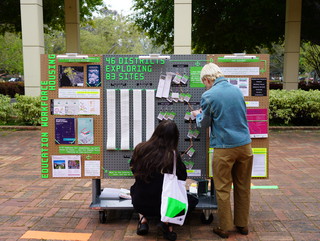
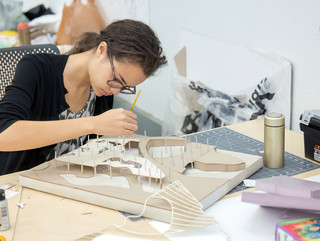

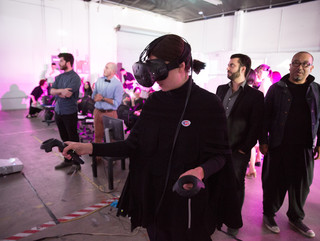
- Perloff Hall on the UCLA campus
- Participatory installation by cityLAB in Perloff Courtyard
- Student working in studio
- 3D Print Lab in Perloff Hall
- VR/AR demonstration during studio reviews
Perloff Hall
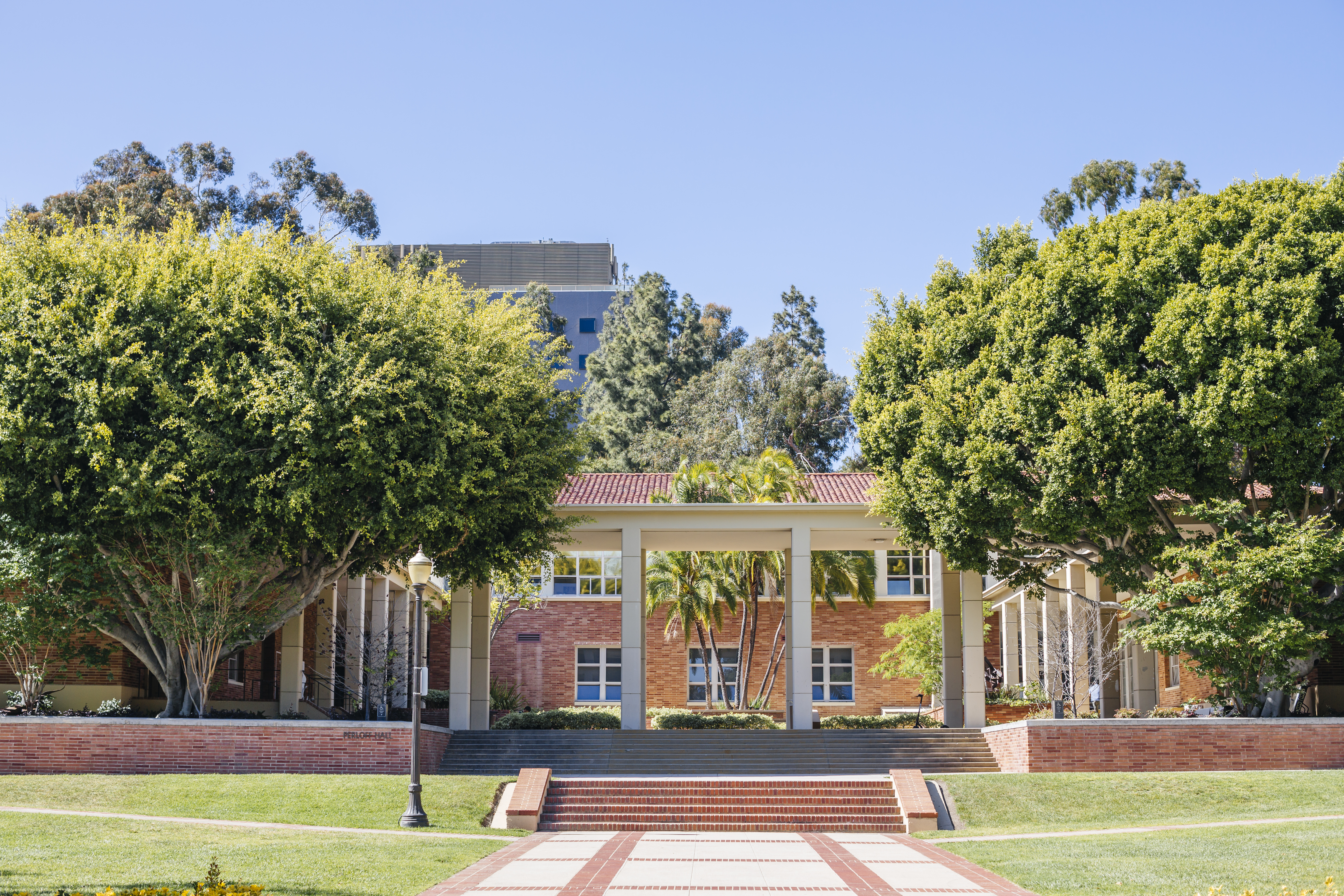
Perloff Hall is named after Harvey S. Perloff, who served as dean of the UCLA Graduate School of Architecture and Urban Planning from 1968-1983. Perloff Hall is located on the northern end of the UCLA campus, alongside other prominent UCLA School of Arts and Architecture buildings including Broad Art Center, Royce Hall, and the Fowler Museum, as well as the Franklin D. Murphy Sculpture Garden.
Most graduate architecture classes are held in Perloff Hall, which contains studio spaces, seminar rooms, classrooms, a lecture hall, exhibition gallery, and faculty and admin offices. Graduate and undergraduate students have dedicated studio spaces with their own desks and designated storage spaces. All studio spaces are secure private workspaces for students. M.A. and Ph.D students have their own study area in the building. The building is closed to the public during off-hours, but students have 24/7 access to the facilities.
Facilities and Resources In and Around Perloff Hall
Historic Perloff Hall houses a range of spaces and resources to support students and catalyze their design projects and visions.
Robotics Lab
Our robotics-enabled workspace is a flexible and evolving resource that supports a wide range of creative and experimental work. With the ability to integrate with leading digital design tools, it offers a platform for exploring fabrication techniques, immersive media, and interactive environments.
At its core, the space is designed to foster adaptability and creative exploration for both students and faculty. Its workflows support interdisciplinary thinking and hands-on experimentation, empowering users to engage with projects that span digital modeling, material processes, and emerging forms of storytelling.
3D Printing
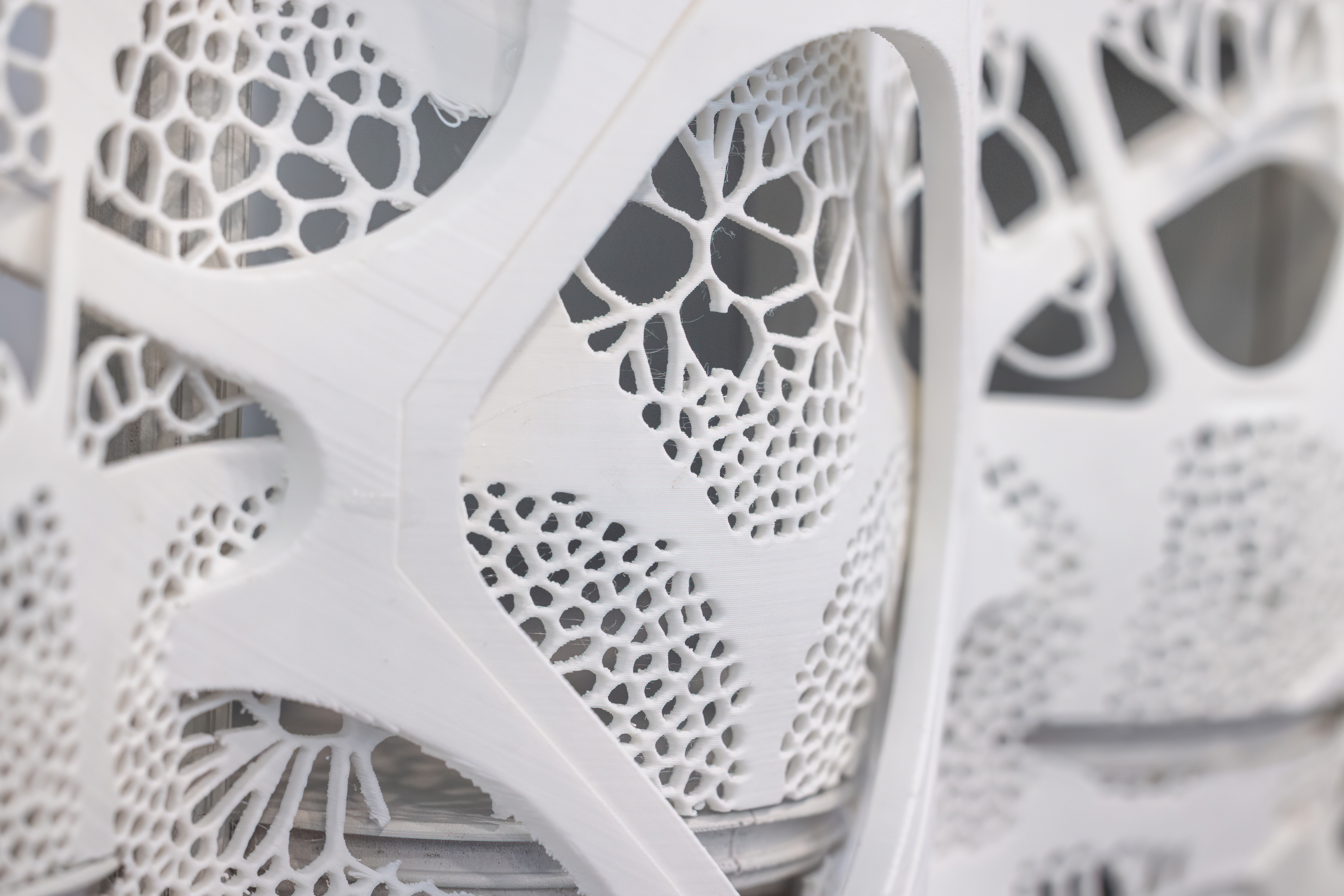
We provide a diverse selection of 3D printers, including FDM printers, plaster printers, and resin printers. They serve as a catalyst for nurturing creativity and promoting critical thinking among students. This enables students to create immersive educational experiences by bridging the gap between digital and tangible learning.
Immersive Media Studio: VR, AR, and Motion Capture
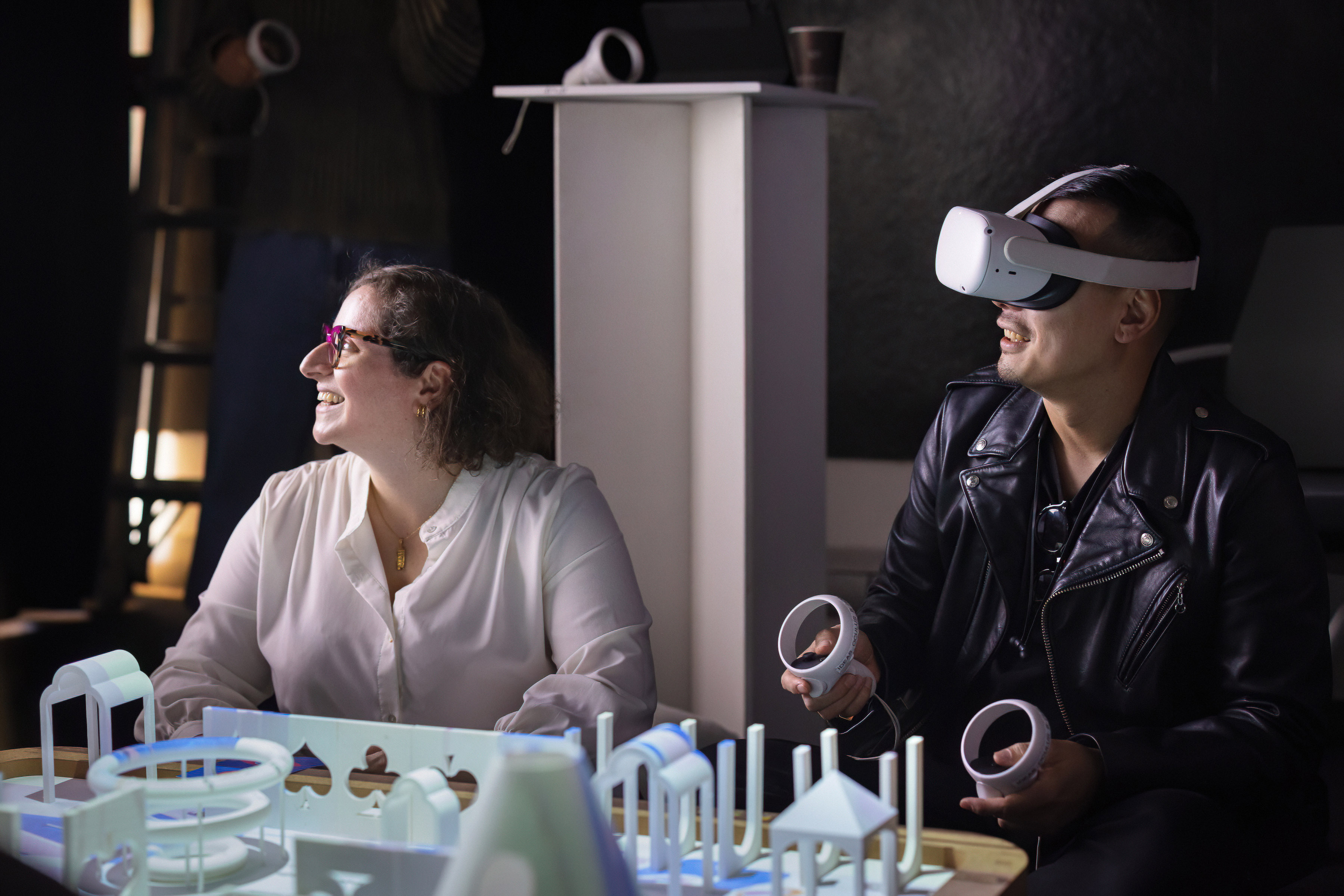
The Immersive Media Studio is a hybrid platform for spatial experimentation, media performance, and digital prototyping. Students use the studio to investigate how emerging technologies reshape architectural and urban experience:
• Motion Capture (Mocap): Full-body tracking enables real-time digital replication for interaction design, performance, and simulation.
• Virtual Reality (VR): Fully immersive 3D environments support spatial storytelling, experiential walkthroughs, and scenario testing.
• Augmented Reality (AR): Real-world overlays allow for mixed-reality prototyping and enhanced spatial perception.
Outfitted with motion capture suits, depth-sensing systems (Kinect, RealSense, LIDAR), DSLR cameras, projectors, and a range of head-mounted displays (HTC Vive, Oculus, Meta2), the studio enables experimentation across scales and disciplines. Spatial computing platforms (Arduino, Raspberry Pi, Intel Galileo) allow for custom hardware integration and real-time feedback systems.
The studio supports a broad spectrum of uses—from immersive filmmaking and behavioral simulation to compositing, performative installations, and digitally augmented fabrication. Its modular design allows it to evolve alongside student needs and emerging practices. It is designed to provide access to a wide range of devices for every possible creative use: filming, compositing, projection mapping, digital immersion, spatial psychology, and more.
Fabrication Shop
UCLA Architecture and Urban Design has longstanding expertise in emerging technologies and continues to set the standard for integration into the overall academic curriculum. In addition to training students in conventional building technologies necessary for professional competence, such as structures, construction, environmental control, and mechanical systems, we also seek to advance the state of architectural knowledge by undertaking research in emerging technologies.
Leading architectural technologists take time out from their practices to teach students in Technology Seminars and studios that focus directly on applying emerging technologies to contemporary problems. These courses explore a wide range of design and computational issues, with a particular focus on the manufacturing process, environmental and sustainable design, and new techniques of visualization. Advanced courses explore special topics in computer-aided design, software development, new modes of manufacturing, and the use of numerical control in the development of building elements and assemblies.
The Fabrication Shop at Perloff Hall offers a wide range of traditional tools, as well as large-scale CNC (computer numerically controlled) routers, laser cutters, 3D printers and large-scale vacuum formers. While the Fabrication Shop is open 24/7 , specialized tools can be used under the guidance of the Shop Manager and student assistants through 10pm. All students receive training at the beginning of the program and the Shop Manager can also provide guidance and expertise on fabrication techniques.
IT and Print Lab
High-Performance Workstations for Design and Development
Every lab workstation in Perloff Hall is powered by industry-standard NVIDIA GPUs, 32GB of RAM, and 1TB of local storage—providing the computational power needed for rendering, simulation, real-time visualization, and machine learning. These systems are optimized for a wide range of architecture and design software, empowering students to push the boundaries of their work.
24/7 Print Lab Access
The Print Lab is open around the clock, giving students uninterrupted access to professional-grade output equipment. High-resolution, large-format plotters, laser printers, and advanced computing stations support workflows from technical documentation to experimental graphic production. Whether preparing for reviews or pursuing speculative research, students have the tools to translate vision into form.
Perloff Hall provides campus-wide wireless and wired access, underpinned by a robust 10Gb backbone that ensures high-speed performance for all studio and lab activities. Students and faculty benefit from seamless integration with UCLA’s centralized Bruin Online (BOL) system—connecting them to cloud storage, campus-wide software services, library access, and digital coursework platforms like BruinLearn.
Bruin Online (BOL) is a collection of services provided by UCLA that includes centralized email services, wireless network connectivity, file sharing services and access to many UCLA campus and library facilities. Students can access BOL with their UCLA Login ID.
Decafé and Perloff Gallery
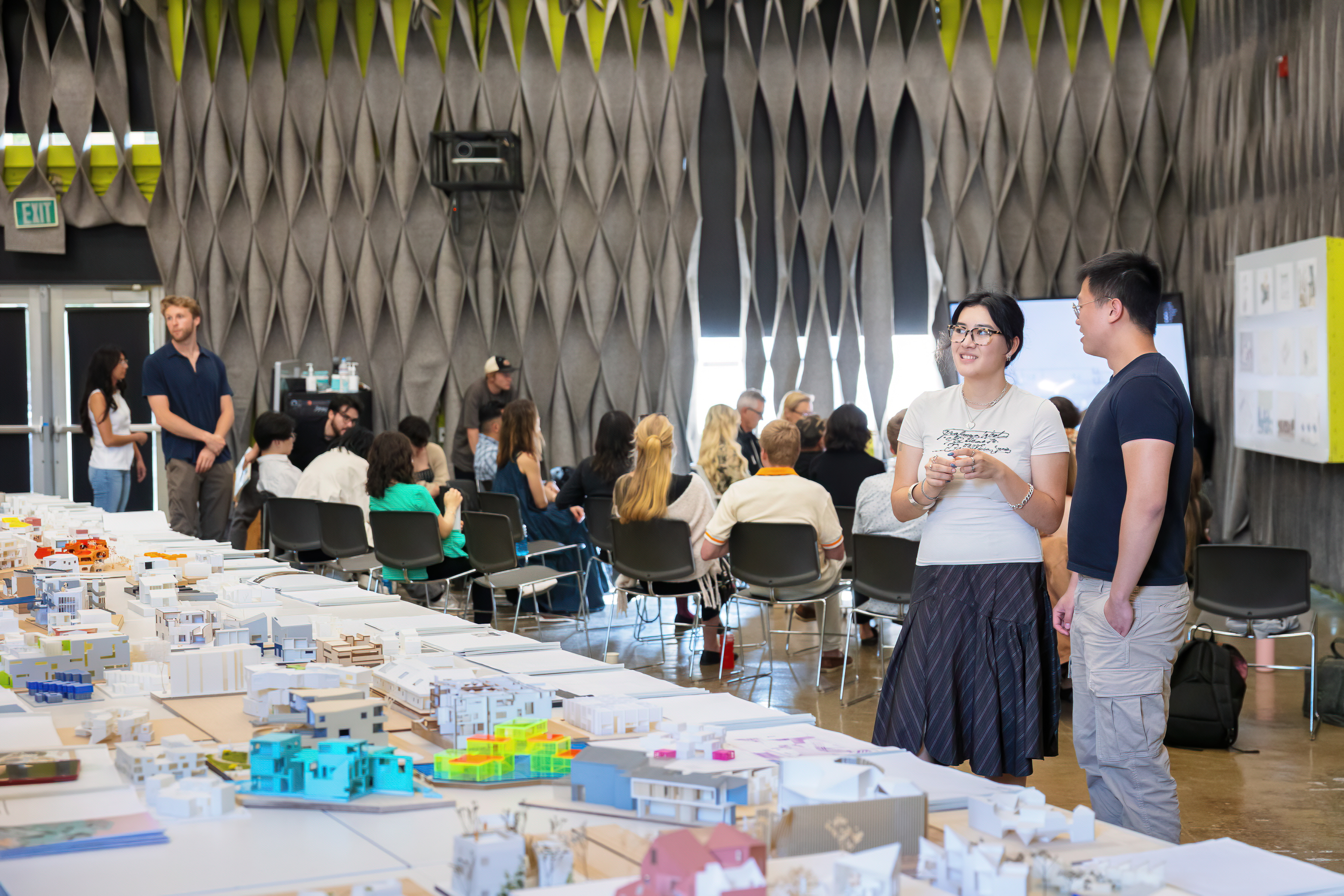
Named by former dean of UCLA’s Graduate School of Architecture and Urban Planning (now UCLA AUD), Professor Emeritus Richard Weinstein (1932-2018), the Decafé is the intellectual heart of UCLA AUD's Perloff Hall. With a 150-seat capacity the Decafé is a multi-use space that is used for all major department events including lectures, symposia, Career Day, and more.
The Perloff Gallery is a dedicated exhibition space that features the innovative work of faculty, students and invited architects, artists and designers.
UCLA Libraries
The UCLA Arts Library is located in the Public Policy Building adjacent to Perloff Hall. It offers an interdisciplinary research collection in the areas of architecture and the history of architecture as well as art, art history, design, film and television, photography as a fine art, studio art, and theater, and is composed of more than 254,000 volumes. Holdings in architecture include approximately 51,000 books wholly or partially devoted to the field, 650 current serial subscriptions (including some 300 periodicals), extensive backfiles of periodicals with indexes, and a collection of theses from UCLA Architecture and Urban Design students. The library receives the most important American, European, Japanese, and Australian architecture titles, and also gets many leading periodicals covering graphic, industrial, and furniture design. Its holdings, particularly in the areas of regional and contemporary architecture, are continuously expanding.
The Young Research Library is also located in North campus close to Perloff Hall. Their Department of Special Collections actively collects drawings and papers of architects and landscape architects. Among the architects represented are Richard Neutra, A. Quincy Jones, S. Charles Lee, and Lloyd Wright.
In addition to hard-copy resources, UCLA offers an abundant choice of digital resources for architecture students. ORION2, the University Library’s online information system, provides access to books, archives, audiovisuals, computer files, dissertations, government documents, and maps in all UCLA libraries. The California Digital Library’s (CDL) Melvyl Catalog provides computerized access to similar multimedia resources in the libraries of the nine UC campuses, the California State Library, the California Academy of Sciences, the California Historical Society, and the Center for Research Libraries.